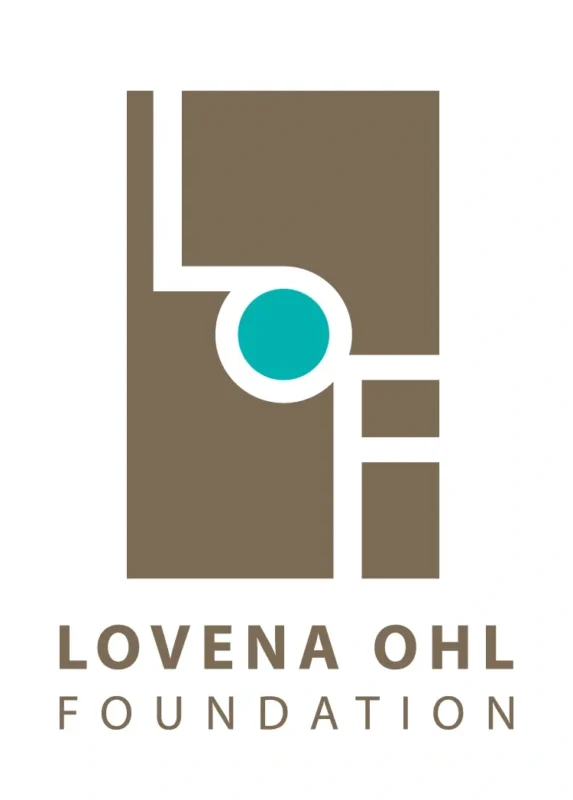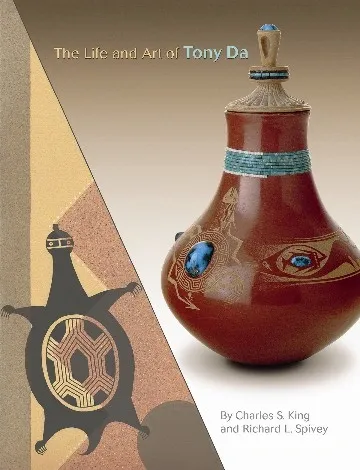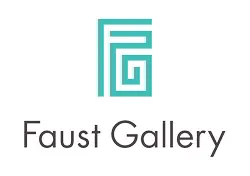
Lovena Ohl Foundation
Since 1978 | A Driving Force Behind American Indian Art and Artists
About the Lovena Ohl Foundation…
A Brief History…
When a young widow from Pennsylvania came to Phoenix, Arizona in 1946, accompanied by her seriously ill, asthmatic nephew, little did the world of American Indian art realize that a fairy godmother had arrived.
Over the years, Lovena Ohl became an acknowledged authority on the art form she considered so intrinsically American. “I believe Indian art is the future. It is America’s art,” she said. “That is why I have worked so hard to promote it.”
Indeed, she worked very, very hard. Year after year after year, Lovena visited the reservations of Arizona and New Mexico, establishing firsthand relationships with painters, sculptors, jewelers, weavers, and potters. Under her management, the Heard Museum shop was hailed by Sunset magazine as one of the nation’s finest. (Former auxiliary president Sandra Day O’Connor cheered her on!) After opening her Scottsdale gallery in the late 70‘s, Lovena was called the “doyenne of Southwest Indian arts” by Forbes magazine. (Forbes in italics)
A distinctive way of doing business also gained her accolades as well as clients from the United States and Canada, Europe and Asia. “Lovena Ohl was a living, breathing, talking value system,” says her nephew. “I learned a lot from her. I learned that love is a gift. I learned the value of work and that when you do something you love it is not work. Aunt Lovena never had any customers, she only had friends.”
The energetic, bright-eyed grandmotherly woman who inspired these words could have been the template for Mrs. Santa Claus. Especially when it came to generosity. Only a year after opening her Marshall Way gallery, with the help of John Van Itallie, she established the Lovena Ohl Foundation. This act of love remains dedicated to promoting Indian art and helping deserving artists expand their horizons and nurture their talents.
Shortly before her death, Lovena was presented the Governor’s Art Award for contributions “to the development and achievements of American Indian artists.”
Important as this recognition is, perhaps the words of James Covarrubias best sum up Lovena. In a tribute published by Indian Country Today, he wrote “For many years she was the Gallery Lady in Scottsdale; the lady who always helped American Indian artists, the lady who never turned away the artists who had heard of the Lady Who Loved the People.”
Our Mission…
The Lovena Ohl Foundation and its mission of supporting American Indian art and artists have cut a wide swath through the world geographically. “My aunt would so be proud of the Foundation that bears her name,” stresses her nephew William A. Faust Senior. “She always said ‘We have Faberges in the making. Someday, the American public will recognize that Indian artists are the finest artists we have. We want to help young artists preserve their culture.’ ”
Mrs. Ohl and her partner at that time, John Van Italie, started the Foundation in 1978. During the ensuing years, its mission — helping to support American Indian art and artists — has never changed. When Lovena’s grandnephew, William A. Faust II, ended his relationship with John Van Italie and the gallery that bears his grandaunt’s name in 1996, control of the Foundation passed onto the Faust Galleries and the Faust family. “Lovena would have wanted it this way,” says Bill Faust Jr., the young gallery director
The Foundation is helped by those interested in all aspects of American Indian arts and supports a wide variety of projects as well as individual artists. Selections are based on need and the ability of the Foundation to provide either full or partial support.)
The first individual artist recipient was Quannah Fireshaker, a 22-year-old California Ponca Plains Indian who specializes in painting portraits. The Foundation’s gift allowed Fireshaker to spend a year on her father’s reservation, photographing, interviewing, and painting portraits of tribal elders.
The well-received “Jewels of the Southwest” jewelry exhibition and Arizona State University West’s summer program for American Indian high school students wanting to further their study of the arts are also among recipients. The Foundation proudly helped underwrite the 2006 Charles Loloma retrospective at the Heard Museum in Phoenix. (Lovena was one of the first to recognize the talent of this pioneer, arguably the most influential Native American jeweler of the 20th century.)
Projects supported by the Foundation are not restricted to the United States. In 1990, the Foundation sent Rosemary Lonewolf, a native of the Santa Clara Pueblo Indian Village in New Mexico, to make a presentation at the first Sino-American Conference on Women’s Issues in Beijing, China. “The personal confidence I gained as a result of that experience helped me secure large-scale commissions,” says Rosemary. “Lovena and the Foundation showed me that the world is full of opportunities, not obstacles.”
The following year, the Foundation underwrote an exciting cultural exchange that brought French art students to Arizona’s Navajo Reservation and Navajo art students to L’Ecole des Beaux Arts in Grenoble, France.
What we do today…
Educate…
“I wanted to do something meaningful and educational for Arizona’s children. The Lovena Ohl Foundation helped me realize that dream.”
Annica Benning
A non-Native American, Scottsdale resident Annica Benning has written an informative and colorful book entitled “Arizona: Nations and Art”, which the Foundation helped publish in 2009. Strongly believing that both appreciation and preservation of Native American cultures, she often addresses groups on the importance of youth volunteerism and “bridging the last great divide”.
Discussing diverse subjects including indigenous tribal lands and Code Talkers, this teenager’s book focuses mainly on the diverse Native American art forms and includes works by such illustrious names as Harvey Begay and Dan Namingha.
“Having been involved with Native American arts for almost three decades, I’ve never seen such a great example of youth involvement as Annica’s book,” stresses Bill Faust, Jr. “It was a pleasure to help this young role model encourage greater understanding of what Lovena called ‘America’s art’.”
Hopi Project…
“The educational vision of the Hopitutuqaiki School is derived from the Hopi culture and reinforces the innate intellectual strengths of our people.”
Robert W. Rhodes, Ed.D., Facilitator
Located on the windswept cliffs of Northeastern Arizona, the Hopi Indian Reservation encompasses approximately 10,000 inhabitants most of whom live in 14 villages strung along Highway 264. High unemployment; more than 60% according to some experts, is rampant in this area.
However, gloomy as these statistics are, several rays of hope have appeared on the horizon. First of all, extensive research shows that Hopi children possess exceptional talent in the arts, which can also facilitate reading, writing and science studies. Secondly, with the exception of government jobs, art and craft production produces more income for the reservation than any other industry. Finally, a school came into being in 2005 that takes advantage of innate Hopi talents while, at the same time, meeting the state’s educational standards.
From the very beginning, the mission of the Hopitutuqaiki (Ho’pee’two’two’kaw’ki) School has been to provide positive developmental arts apprenticeships for students, whose ages have ranged from seven to 68. The number of students has grown steadily and though the majority is Hopi, some students are Navajo as well as Zuni and have come from as far away as Indiana.
Curriculum includes arts-based preschool in addition to special classes in overlay jewelry, weaving, carving, clay sculpture and clay vessels. “The students entering the preschool program had little experience in a structured environment,” points out teacher Kate Lowe. However, the students can’t get enough of class! Anxious to participate and learn, much of their enthusiasm is undoubtedly inspired by the preschool center being set up in a very “Hopi-friendly” manner. “Many of the visiting Head start staff wrote and xeroxed a lot of the ideas for use in their own schools,” adds Lowe.
The achievements of students are quite impressive; for instance, a painting incorporating a prayer received second place award at the prestigious annual Indian Market in Santa Fe, New Mexico. Another student received first place award for her painting at the Tuhisma Art Exhibition at Kykotsmovi, Third Mesa, Arizona.
The reactions of family members are especially heart-warming. For instance, a parent wrote in and said, “It was a wonderful experience for my son. Thank you for building part of the foundation for his journey of lifelong learning!”
Considering that many of the students would be considered at-risk because of poverty, family issues or academic failure, these successes are particularly gratifying. “We hope the Hopitutuqaiki School attains its ultimate goal of becoming a year-round arts magnet school,” says Bill Faust, Jr. “If Lovena was still alive, she’d be up here cheering them on!”
Tony Da Book & Musuem Exhibition Project…

“The pottery and paintings of Tony Da deserve greater examination especially since he is widely regarded as a super star of Native American art.”
Bill Faust, Jr.
Charles S. King, author of “Born of Fire: The Life and Pottery of Margaret Tafoya” and Richard Spivey author of “The Legacy of Maria Poveka Martinez” are collaborating on a book about the renowned artist Tony Da (1940-2008) . “Since Tony had a close connection with Lovena and her gallery, we’re more than delighted to provide funding for this project,” says Faust.
Grandson of the noted potter Maria Martinez, Da was one of the early innovators in Pueblo pottery. He was among the first to incise designs into the clay, to add turquoise, and to combine multiple clays on the surface. Inspired by his father as well as his grandfather, Julian Martinez, Da’s paintings are also eagerly sought after. Unfortunately, he was only active for little more than a decade; a serious accident terminated the artist’s career.
The first definitive look at this important artist, the King/Spivey book was published by Rio Nuevo Press in 2011.
In Addition…
In addition to sponsoring individual artists, the Foundation has supported the Southwestern Association for Indian Arts (SWAIA) Lifetime Achievements Award Program. Created to recognize individual artists whose body of work reflects a lifetime of integrity and excellence, the roster of winners includes such notables as Maria Martinez, Allan Houser, Pop Chalee, Lloyd Kiva New and Fritz Scholder.
To the best of our knowledge, the Lovena Ohl Foundation is the only such fund sponsored by an art gallery and dedicated to supporting deserving American Indian projects and artists. Little wonder that the Foundation has earned the glowing tributes from Native Americans such as Larry Golsh. “It has always been difficult for an individual to be recognized,” points out Golsh, a distinguished jeweler described as the “heir apparent” to Charles Loloma. “Many of these Indians are at a disadvantage…many are suffering from a lack of education, travel and other creative stimuli, as well as lacking practical experience.”
Above all, the Foundation reflects the attributes of the founder, which were best summed up by N. Scott Momaday. The Pulitzer price-winning novelist and artist cited Lovena Ohl for “her knowledge, her discriminating taste, her appreciation of indigenous art forms, and her singular dedication to the efforts of native artists”.
About Us…
“Few funds can match the record of the Lovena Ohl Foundation with respect to expenses and the amount of contributor dollars going directly to the recipients.”
William A. Faust Senior, Foundation President
What are the Foundation’s administrative expenses?
“I am proud to say that, over the past ten years, the expense ratio of the Foundation is, for all practical purposes, zero. In dollar terms, for every $1000.00 received by the Foundation, expenses amount to only $6.90, a ratio of .0069. This is especially impressive in today’s world of charitable giving, where scandals over dollars being pocketed by administrators are all too common.”
Does that figure include investment expenses?
“Yes. Generally the single highest cost for most foundations, and often not included in the expense ratio, investment expenses are, for the Lovena Ohl Foundation, essentially zero.”
How do you manage that?
“Prior to my retirement I worked for UMB Bank of Kansas City as an institutional money manager. UMB and the Kemper family, who controls the bank, are very supportive of not-for-profit organizations. They allowed me to manage Foundation funds for almost no charge, which I still do. Also, along with other Foundation officers, I accept no compensation.”
In terms of funds being distributed, what is the Foundation’s bottom line?
“Over the years, the Lovena Ohl Foundation has contributed more than $500,000 to support American Indian art and artists…
To Make a Donation…
Contact us at:
